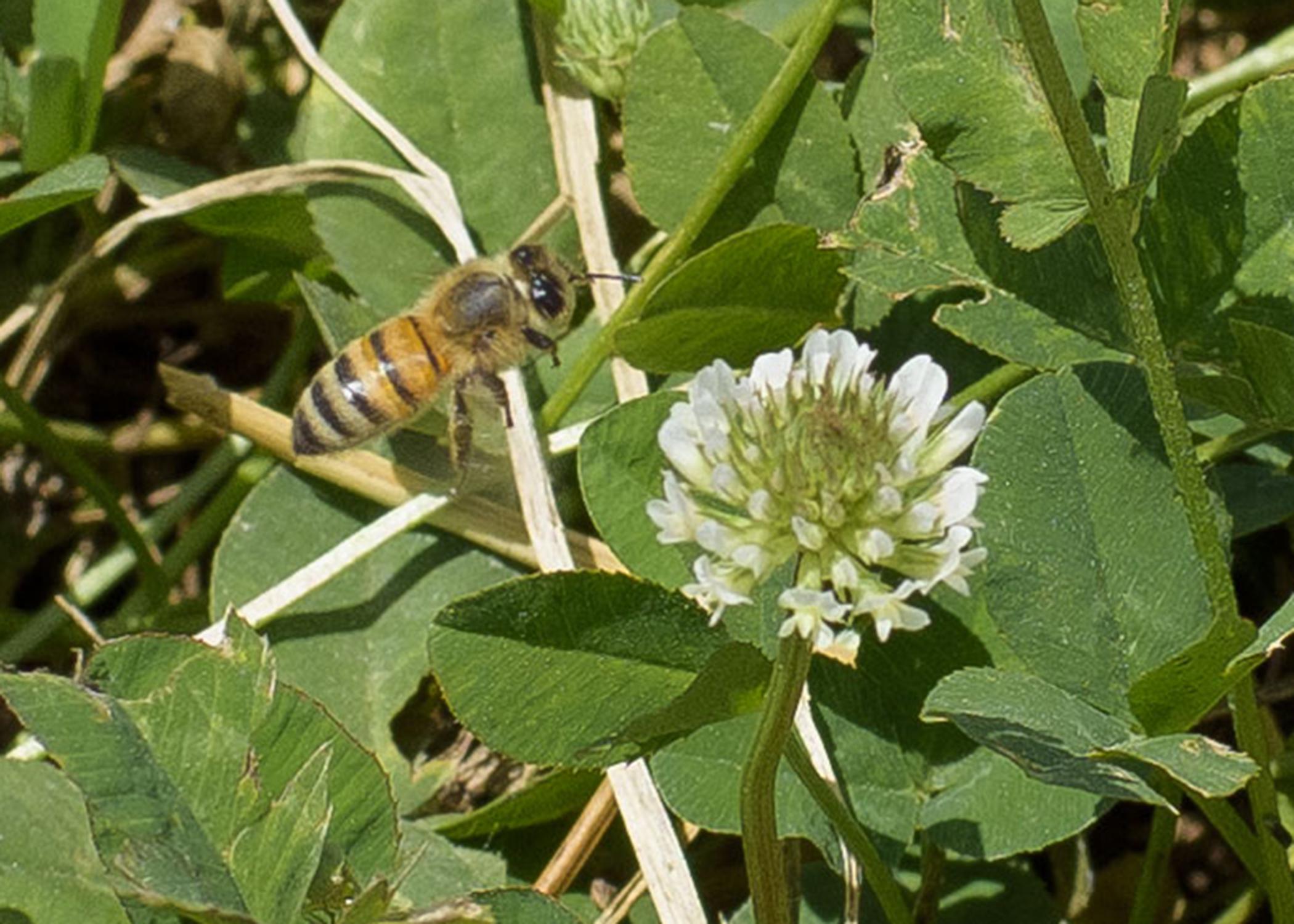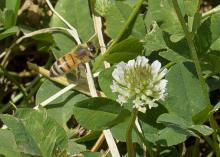Information Possibly Outdated
The information presented on this page was originally released on December 17, 2015. It may not be outdated, but please search our site for more current information. If you plan to quote or reference this information in a publication, please check with the Extension specialist or author before proceeding.
MSU examined pesticide effect on honeybee health
STONEVILLE, Miss. -- Because bees are important to the success of crops, honeybee health is important to Mississippi State University.
Jeff Gore, Mississippi Agricultural and Forestry Experiment Station researcher at the Delta Research and Extension Center in Stoneville, participated in a recent U.S. Department of Agriculture-Agricultural Research Service study of pesticide toxicity to honeybees. The study was conducted in Stoneville at the USDA-ARS Jamie Whitten Delta States Research Center. It was part of ongoing efforts to protect the population of pollinators.
Researchers tested 42 commonly used pesticides in a realistic field setting to determine their toxicity levels for honeybees. The pesticide study examined 40 insecticides, one herbicide and one fungicide.
USDA senior investigator YuCheng Zhu and colleagues found that 26 pesticides killed nearly all bees that came into direct contact with them. However, seven pesticides -- including glyphosate, which is used in Roundup and other weed control products -- killed practically no bees.
“There are many chemicals that have been used in agriculture that were once thought safe for bees,” said Jeff Harris, MSU Extension Service bee specialist and Experiment Station researcher. “This study was important to determine what impact these pesticides have on honeybee health.”
Harris said the study was also important in the way it tested toxicity.
“Many times chemicals are tested for acute dermal toxicity, when different doses are touched to the body of the bee. Others look at acute oral toxicity, when the chemical is put in the bees’ food,” he said. “The big question is what happens in the environment, and this study tried to address that question.”
John Adamczyk, research leader with the USDA-ARS lab in Poplarville, said the study looked at acute toxicity, or whether these pesticides killed bees when they were exposed to realistic doses of the chemicals in an agricultural setting.
“This study gives us a baseline,” Adamczyk said. “We were looking at the acute kill, and we were able to put these chemicals in a sort of order based on toxicity.”
Adamczyk said the study produced no surprises. The chemicals tested were found to have toxicity similar to what the manufacturers and the Environmental Protection Agency stated.
“This information will help beekeepers and growers understand that there are certain pesticides that are clearly very toxic to bees, and it will help them manage that risk,” he said. “Chemicals are often used in combination with other chemicals, and with this data, we can quickly look at what effect these combined chemicals will have on pollinators.”
The study applied chemicals as spray to mimic application methods used by farmers. They tested those commonly used in agricultural settings and simulated a situation where an adult bee in a cotton field is accidentally sprayed.
Researchers found that many but not all of the neonicotinoids, organophosphates and pyrethroids tested killed nearly all of the bees these chemicals touched. However, a few pesticides, including glyphosate and acetamiprid, killed practically no bees in the test.
A few chemicals were found to be more toxic than originally assumed when used at field application concentrations. One pesticide that was considered a high risk for bees was found to be only an intermediate risk when used at the labeled rate.
Adamczyk said this study that created baseline data was just the tip of the iceberg, and much more work needs to be done.
“The impact will come in understanding the toxicity of certain combinations and understanding the residual effect chemicals have on bees,” he said. “If farmers can understand that they need to be extra careful with a particular mixture, they may try something different that is less toxic to bees but still effective for their purposes or be mindful about when and how they spray.”
Contact: Dr. Jeff Harris, 662-325-2976; and Dr. John Adamczyk, 601-916-3369







